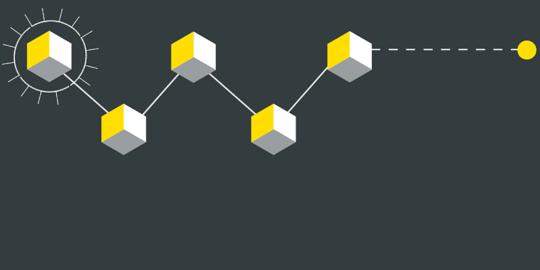Cambridge Wireless’ recent event on 5G core networks provided a fascinating insight into the challenges and opportunities presented by the adoption of 5G technology. Speakers representing network operators, equipment vendors and potential industry disruptors all gave their perspective on the motivations for adopting 5G technology as part of the core network. The discussion also explored the potential for the 5G core network to deliver new services and facilitate new business models. Although the 5G core network standards are still under development a number of interesting themes emerged from the discussion which are summarised below.
New services and business models enabled by the 5G core
Many people focus on the potential applications of the radio technology aspects of 5G, but it will actually be the developments to the core network which will provide some of the long term benefits of 5G. By delivering a Service Based Architecture (SBA) the 5G core will be a key enabler for many of the new application and business models promised by 5G.
Work is already well underway to develop standards which will enable 5G core networks to support specific verticals and applications. 5G will enable network slicing, allowing network operators to effectively run multiple simultaneous core networks, with the attributes of each fine-tuned to support a specific type of application. Work is also underway to define and test the requirements for a number of specific applications and verticals including smart grids, remote driving, live VR and industrial control. While network slicing is theoretically possible on LTE networks, it requires separate hardware, slices have a slow set up time and costs are high. The SBA of 5G will make network slicing far more efficient, as slices can be created quickly and simply and using the same underlying physical infrastructure.
While certain uses cases for network slicing are already well defined, there is also a huge amount of potential for innovation in the types of network slice which could be deployed. For example, the ease with which network slices can be created could lead to a market for deploying network slices to support a particular event, where the slice only exists for the duration of the event. There is also room for innovation in the way access to network slices is sold. New entrants may be able to design and sell access to network slices focusing on a particular application or target market or MNOs may choose to take on this role themselves.
SBA also has the potential to open up a marketplace for new types of network services. These could be general services, applicable to a wide range of different use cases or bespoke services, specific to a particular use case or vertical. Deployment of these new services could potentially be very rapid, with something close to a “plug and play” model where the service is registered with the network repository function (NRF) for a particular network slice and then becomes available to all other elements in that slice.
The 5G core also gives rise to the potential for core network functions (and therefore data) to be accessed by parties outside the 3GPP ecosystem. For example anonymised user location data could be provided to metropolitan authorities to create better models of pedestrian traffic flow through busy areas. This may lead to significant innovation in services and business models, although regulatory constrains such as data protection legislation could be a limiting factor in certain circumstances.
Drivers for investing in a 5G core network
A general move to cloud based and virtualized core networks has already been going on for a number of years. Even if mobile network operators (MNOs) stay with LTE there will be drivers for them to adopt cloud based solutions to reduce cost, support new services, improve scalability and make their networks more robust. These general benefits of cloud based architectures will also apply to the 5G core network. MNOs could therefore leverage a 5G core network model to bring the benefits of cloud to their current LTE offering.
Moving to a 5G core network will also have advantages over virtualizing existing System Architecture Evolution (i.e. LTE) physical network infrastructure. One reason a cloud based model is attractive is that it should enable easy switching between vendors of virtualized network functions (VNFs) in a way which isn’t possible with the equivalent physical network function (PNF). In reality many MNOs have found that VNFs end up running in different vendor specific silos, increasing the complexity of switch between vendors. The generic SBA of 5G should remove the problem of vendor silos and open up a much more fluid marketplace for providers of different network services. Moving directly to a 5G core could also reduce potential migration issues associated with having to transition a part physical, part virtual LTE core to 5G.
Challenges with the 5G core
While there are clear benefits in moving to a 5G core there are also significant challenges. One key challenge is identifying the 5G use case which is going to provide sufficient return on investment for deploying a 5G core. The potential to deploy non-standalone (NSA) 5G will allow MNOs to start offering customers enhanced mobile broadband while still using their existing 4G core network. With this potential revenue stream already available, MNOs will need to think carefully about the justification for the additional investment needed to also move to a 5G core.
There will also be challenges relating to the integration of the 5G core with existing legacy infrastructure. Many MNOs will have to work out how to continue supporting legacy core network functionality associated with earlier generations. This challenge will be reduced by 3GPP Release 16 which is expected to provide a model for fully integrating 4G core network functionality in a 5G core environment, but may remain in the content of supporting 3G and 2G technologies.
Challenges also exist around the practicalities of integrating network functions from multiple vendors into a single cohesive environment. Some MNOs may have the resources to perform the system integration function themselves. Other may need to reduce the number of vendors they use and select a single vendor to provide system integration.
5G’s SBA also creates challenges around network tracing for service management and trouble shooting. Existing network tracing techniques focus on probing physical network elements. Moving to a cloud based environment will require new ways for the MNO to obtain and aggregate data from the different VNFs.
Finally, there may also be challenges around the financial and regulatory modes associated with a 5G core. If MNOs are taxed or have to pay for VNFs based on the number of network slices they run, this could act as a disincentive to innovation.




